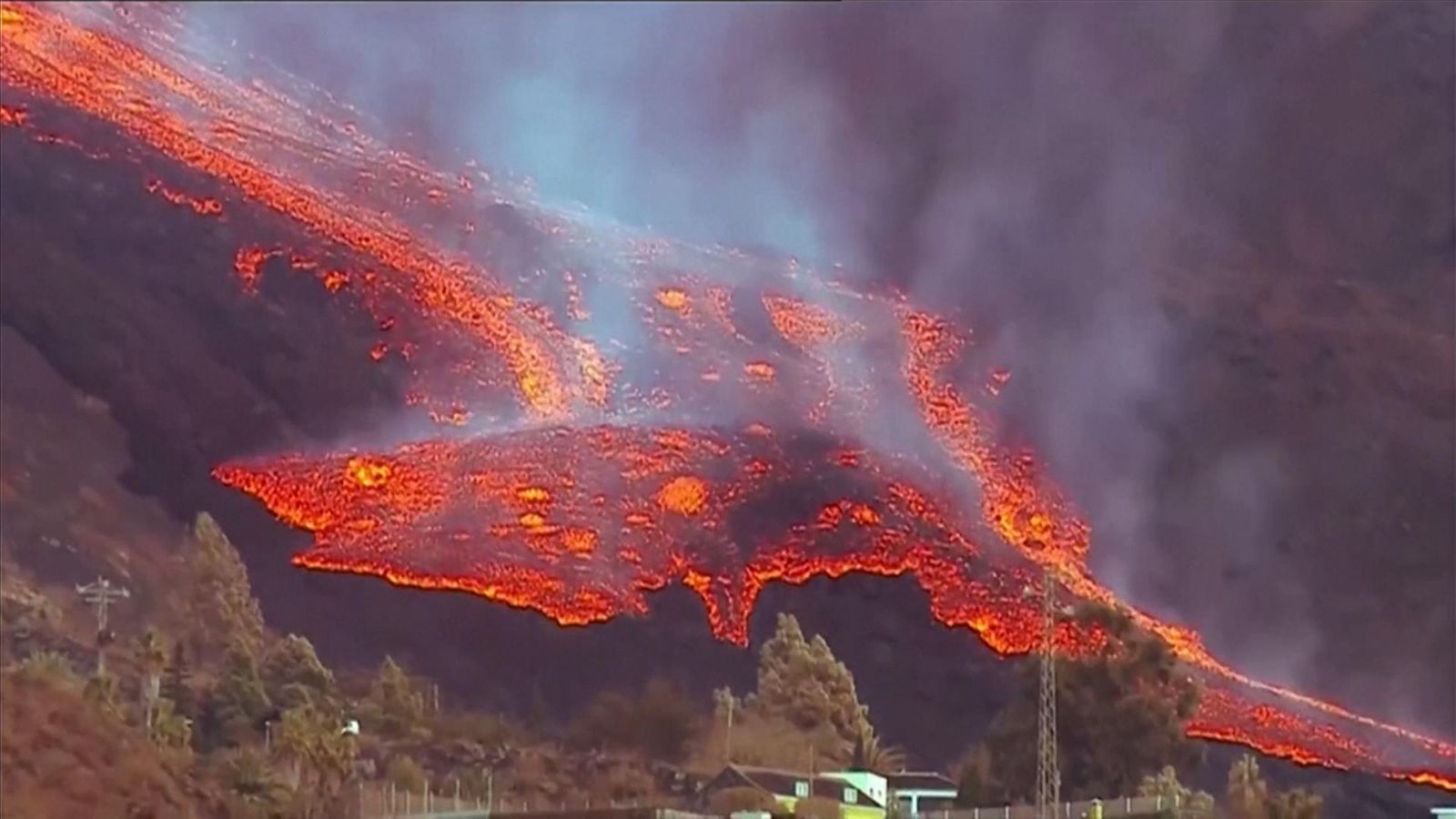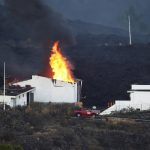Lava flowing from an erupting volcano in the Canary Islands – that could create clouds of toxic hydrochloric acid vapour – is now within 800m of the ocean.
While one of two lava rivers has slowed on La Palma, the other has picked up pace on its way to the shoreline, officials said on Tuesday.
The flow is “hotter and more fluid” and bearing down on the small town of Todoque, forcing people to be evacuated from their homes.
When it hits the sea it could create a thermal shock that will release toxic vapour into the atmosphere – particularly hydrochloric acid that is dangerous to breathe and irritates the eyes and skin.
Watch live: La Palma volcano eruption
Please use Chrome browser for a more accessible video player
Officials had been expecting the lava to reach the Atlantic Ocean for days, but the eruption has been erratic and after calming down on Monday, the volcano became more explosive overnight.
Residents living on the shoreline have been warned to stay indoors.
La Palma volcano: Weeping for those who’ve lost everything
La Palma: Residents in limbo as pressure in the Cumbre Vieja volcano drops – but eruption threat remains
La Palma’s airport forced to close as second volcanic vent opens, spewing more ash across the Spanish Island
Sky News correspondent Becky Cotterill, reporting live from the Spanish Canary Island, said: “There is this giant fountain of lava coming out of the volcano a little further down. It looks like it is several hundred feet high.
“One of the things we have noticed in the last hour as the sun has risen is just how much thick black smoke there is coming out of the top of the volcano and collecting overhead.
“The big concern now is and when this lava is going to hit the sea. It is a very steep slope from the top of the volcano down to the coast.”
The explosion, which began nine days ago on 19 September, has already destroyed more than 500 homes, entombing many in molten rock.
Thousands have been forced to leave their homes
No fatalities or serious injuries have been reported since the eruption began, due to prompt evacuations by emergency services.
The volcano has so far spewed out more than 46 million cubic metres (1.6 billion cubic feet) of molten rock, according to the Canary Island Volcanology Institute.






















